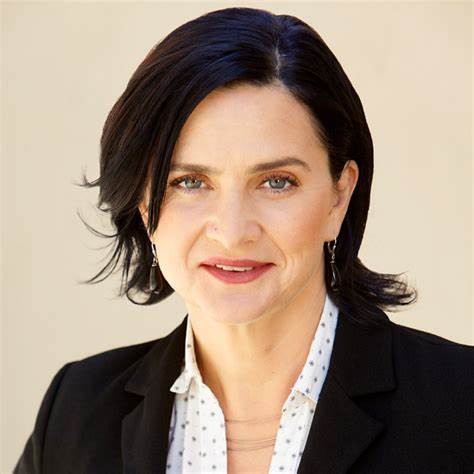
Prof. Janet O’Shea
The stage lights come up gradually as a bharatanatyam dancer, costumed in a tailored silk sari and beautifully adorned in jewelry, walks out from backstage. In a manner neither formal nor completely relaxed, she walks downstage to a pointbeyond the normal performing space but still removed from the audience. She begins to explain the key features of this South Indian classical dance form. Mores pecifically, she extracts, for decoding, the symbolic hand gestures known as mudras from bharatanatyam’s semiotic lexicon. Standing in one place and without musical accompaniment, she performs mudras fluidly and gracefully. Meanwhile,she also translates into English the sahitya, or lyrics, of the song that the gestures will accompany. Demonstrating her skill in elegantly balancing the competing tasks of speaking and rendering gestural movement, she alerts the audience to the linguistic nature of the abhinaya, or dramatic dance.
At the end of the synopsis, the dancer retreats backstage. A musical interlude signals the beginning of the “actual” performance. The dancer reappears, walking crisply. When she launches into the performance of the piece, her gestures flow easily as in the explanation, but now she augments them with evocative facial ex-pressions and a directed use of her gaze. Bharatanatyam, a highly technical, primarily solo South Indian classical dance form, consists of a repertoire and vocabulary that bifurcates into nritta, abstract rhythmic choreography, and nritya or abhinaya, dramatic dance.
Its nonthematic sections consist of explosions of virtuoso footwork, performed with legs rotated outward into a bent-knee position that exemplifies the form’s characteristically grounded use of weight. An erect torso floats gracefully above the dynamic feet. The abhinaya component, by contrast, organizes itself around lyrical, leisurely phrases of gestural movement traced by articulated fingers, hands, and arms. In these segments, the dancer walks in time to the music, her body position almost quotidian in comparison with the sharply delineated positions of the more staccato phrases. Preperformance explanations have characterized bharatanatyam performances over the course of the 20th century. In the mid-1920s, when brahman lawyer E. Krishna Iyer initiated his mission to resurrect bharatanatyam as a cultural treasure,he did so through lecture demonstrations as well as performances, which he offered in cities and towns of Southern India (Arudra 1986/87b:33). Jewish-American dancer Ragini Devi’s first international tours of classical Indian dance forms in 1937 and 1938 consisted of lecture demonstrations as well as concerts(The Civil and Military Gazette 1938).
In the mid-1940s, Ram Gopal introduced to his tightly designed series of short, classical Indian dances brief verbal explanations, which preceded each dance with a sketch of its overall theme (David 2001:35–36). The specific practice of executing mudras while offering a verbal interpretation of sung poetic texts rose in popularity in the 1980s and early 1990s. During the early 1990s, the practice became so prevalent that dancers imported explanation into Indian performance contexts, including into bharatanatyam’s home city of Chennai, formerly Madras.
The demand for translation signals bharatanatyam’s 20th-century history of recontextualization and its long-standing international circulation. The practiceof interlocution both responds to and obscures the dance form’s participation in a global culture market. It reveals the kind of historical double binds with which the late-20th-century bharatanatyam dancer contended. The practice of verbal explanation thus speaks to the 20th-century predicament of bharatanatyamin which the dance form appears internationally as both an emblem of national and diasporic identity and as a “high art” that transcends national and linguistic boundaries.At the same time, however, verbal translation paradoxically accords the choreography an inscrutability while also demonstrating its translatability. This kind of preperformance synopsis lines up two thought systems: an English verbal framework and a South Indian choreographic one. The explanation of mudras in succession interprets the “Eastern” choreography through the “Western”linguistic system. The English-language epistemology thereby emerges as the means through which the audience finds the choreography intelligible. Thus, this style of translation relies upon a problematic that treats the English-language framework as a mere explanatory device without its own cultural coding. A spoken interlocution thus risks representing bharatanatyam more as a means of entry into a cultural field of reference, than as a set of choreographic choices and compositional devices.
Orientalism and Globality
When a dancer, viewer, or promoter presents bharatanatyam as both requiring and evading translation and treats the English-language explanation as culturally“neutral,” s/he revisits the central premise of the 18th- and 19th-century orientalist treatment of Indian literary and scholarly texts. The orientalist model of translation rested on the assumption that the “Eastern” text required the intervention of an interlocutor who, through his specialist knowledge, could unlock its mysteries for “the West.”Thepublicwhoreceivedthisinformation,withintheorientalist paradigm, inhabited the position of subject rather than object of knowl-edge. The representation of “foreign” texts and practices within 19th-centuryEuropean society thus did not encourage viewers/readers to examine their owncultural investments but rather reinforced the presumed objectivity of their ownsocial and political position. Preperformance translations, like the textual material of the colonial orientalistperiod, characterize bharatanatyam as an object of knowledge, to be uncoveredand explained by an expert interlocutor. Nonetheless, they invert an orientalistdivision of labor by conflating the roles of “native informant” and translator-author. As such, the translating dancer generalizes her own subject position by interlocuting for the dance form. The act of translation, then, marginalizes the dance form for its international viewership, designating it as that which requires explication; but at the same time, this translation universalizes the dancer’s status as she adopts the position of the
agent of information…
Janet O’Shea, Professor, Department of World Arts and Cultures/ Dance, University of California, Los Angeles